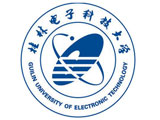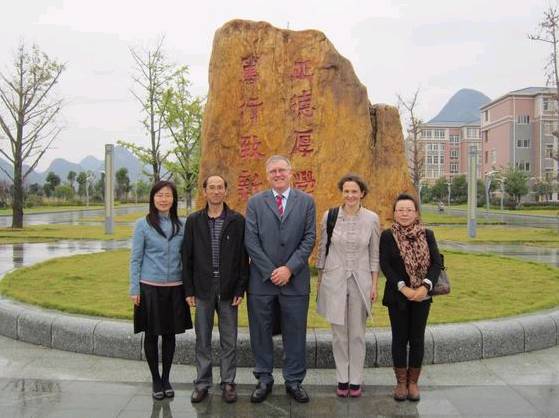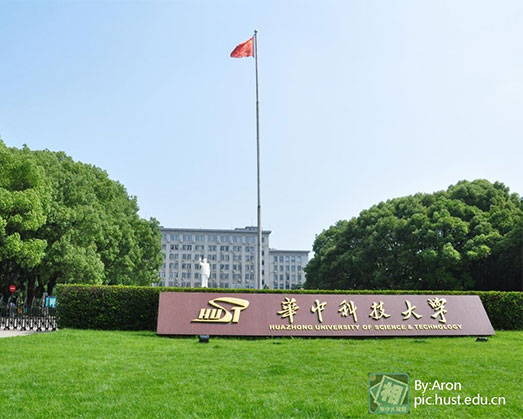Brief Introduction of Guilin University of Electronics Technology (GUET)

As with most universities in China, Guilin University of Electronics Technology has undergone change since its beginning. The university was first established in February of 1960, and at that time it was called The Guilin Mechanical Polytechnic School. Operating under the auspices of the First Ministry of the Mechanics Industry, the school filled a need in China to train students in the fields of both mechanical engineering and electronics. By 1965 the curriculum included a Major in Mechanical Engineering with a work-study component and more than 100 classes offered. During the two decades from 1960 to 1980, the school worked through the many challenges that resulted from China‘s Cultural Revolution period, and despite setbacks, the school flourished in both research and development. The library was built in 1972 and by 1973 there were 1000 students in attendance. The university was on its way to becoming a major presence in China and the world.
The next decades brought further change. In 1980, under the Fourth Ministry of the Mechanical Industry, the school changed its name to The Guilin Institute of Electronics Technology and began recruiting diploma program and undergraduate program students from all over China. Within just a few years, the school fell under the auspices of The Ministry of the Electronics Industry, and by 1987 the school was awarded the Ministry of Electronics Technology Progress Award for its work related to testing the mechanical parameters of print heads. This same achievement was in 1989 awarded the National Science and Technology Progress Award.
Throughout the 1980s, the school continued its expansion of curriculum, and in 1986 added a Master‘s Degree program for Electronics Technology Specialists. The research and development then included a range of activity in the areas of high frequency single sideband mobile radio, dynamic IC testers, computer services management, electronic machinery development, electronic communications systems, computer-aided testing, computer applications, voice processing devices, digital still image transmission systems, microwave radio and other computer-aided design work. Work and study in science and technology was also complimented by arts and cultural studies. In 1990, the university held its first Culture and Arts Festival.
During the 1990s, the university added more advanced curricula and included Master‘s Degree programs in Signal and Information Processing and Computer Applications as well as Computer Information Networks. In 1996 and again in 1997, students from the school took the top prizes in the National Mathematics Modeling Contest, and later in 1999 also won first prizes in the National Undergraduate Electronic Design Contest. Continuing to expand, the Physics Laboratory, Machine Experimental Center, Center for Electronic Circuits and the Computer Laboratory Center were all set up in 1997. That same year, a cooperation agreement was signed with Australia Curtin University School of Electrical and Computer Engineering. Then in 1998, the first students enrolled in a Master‘s Degree program offered by the university‘s Institute of Cultural Studies. In 1999, now under the auspices of the Ministry of the Information Industry, programs of study expanded to include Computer Information Management, Political and Ideological Education, Applied Mathematics, English, and Economics. During this same year, the university also signed international cooperation agreements with the Vietnamese Ho Chi Minh City University and Peninsula College in the state of Washington, USA. Indeed it had been a productive decade and paved the way for further improvements from the year 2000 and beyond.
Although the university had been known through its scientific publications as the Guilin University of Electronics Technology for a number of years, the university was officially granted this title in 2006, and the university has been under the joint-supervision of the Guangxi Municipal Government and the Ministry of the Information Industry of China since March of 2008. During this decade, further expansion in curricula have been made, even now including the joint 2+2,1.5+2.5 undergraduate programs in College of International Exchange, and several PhD programs.
The university has also held several important international meetings for science and research with moe than 2000 attendees from all over the world.
Increasing in size and breadth, Guilin University of Electronics Technology (GUET) acquired a campus at Beihai in the south of Guangxi Province and recently built a new campus at YaoShan in a beautiful valley about 20 kilometers outside of the city of Guilin.

Cooperation with universities internationally has remained strong, and the school now has close cooperation and exchange ties with more than 50 universities in countries such as the UK,Ireland,Germany, France ,Italy,Poland,Neitherland,Japan,Vietnam,Australia,New Zealand, Canada and the USA. Until 2010 fall,about 800 GUET students have been sent abroad for undergraduate or master’s program by 20 exchanged students’ programs. International students from Vietnam,Germany,Australia,Japan are enjoying their Chinese Language study here.
During its 50 year history, GUET has gradually developed into a university with Electronic Information Technology as its primary discipline with other educational opportunities offered in fields that include Mechanical Engineering,Computer Science, Material Science,Business Management, Literature, Law, and Education. Flexible modules are available to full-time and part-time students seeking the full range of diplomas from Education Certificates to Bachelor‘s Degrees, Master‘s Degrees or Doctorates. Currently there are about 26,000 full time domestic students and over 300 overseas students studying at the university.
News&Opinion
 more
more- Foreign students should be entitled to an educa...
- Islamic school in Xinjiang to double enrollment
- Stop Blaming Colleges for Society's Problems The...
- China's new code of conduct for students trigger...
- Chengdu education goes global with more int’l co...
- Special needs education spending increased in Ch...
- China Academy of Translation launched in Beijing
- Foreign Teacher Training Institutions: The Only ...
Policy&Laws
How to Get one Job in China---Beijing policy
A foreigner, right, shows his job application form at a human resour...
Guilin to offer 72-hour visa-free stays
GUILIN - The city of Guilin in South China's Guangxi Zhuang autonomo...
further strengthening the visa regulation of int...
After the promulgation of new Immigration Control Act in China, Entr...





 print
print  email
email  Favorite
Favorite  Transtlate
Transtlate 







